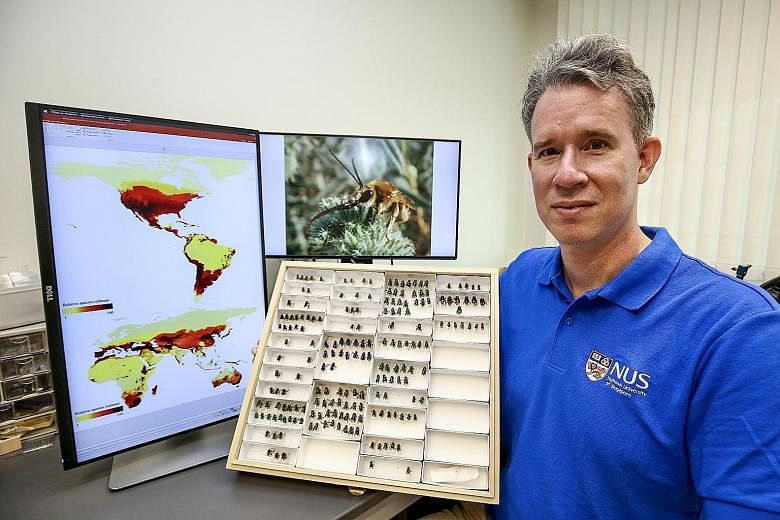Bees are the most important pollinator, with a crucial role in producing fruit and vegetables that feed people, yet little is known about their distribution beyond North America, Europe and Australia.
To pave the way for in-depth studies and conservation of the more than 20,300 species worldwide, researchers from four nations, including Singapore, have plotted the first "bee map" to chart the creatures' diversity across the continents.
The global map is made up of several others, and the researchers believe one of them is a first for invertebrates in tracking the species' richness at a national, sub-national or state level.
The map - built from hundreds of thousands of global records and specimens, and almost six million records from public databases that were verified - revealed gaping holes in currently known patterns about bee diversity.
"Bees are reported to be in decline worldwide. And I say 'reported' rather than confirming they are because a lot of these reports are based in the Netherlands, England or the US," said Assistant Professor John Ascher from the department of biological sciences at the National University of Singapore.
"They're reporting global declines but their data set is not really global," added Prof Ascher, who is one of the project's researchers and the main data provider for the bee map.
The other researchers are from China, Britain and the United States. Their research paper with the map is published in the journal Current Biology today.
Previously, global representation of bee species was skewed.
For instance, the map shows that 15 per cent of the species are found in Asia, but only 1 per cent of the region's species were shown in the public databases online.
The map also confirmed some hypotheses about bee hot spots.
Most plants and animals are more diverse in the tropical areas, but bees are more prevalent in regions that are neither too tropical nor too cold. These regions include deserts and wine-growing places such as France and Argentina.
Prof Ascher said: "Knowing this is very important for conservationists because they may think: 'If we want to conserve biodiversity, we need to save the rainforest.'
"In addition to the rainforests, we need to conserve places in the Middle East."
Since most bees nest in the ground, their larvae can be killed by fungi or harmed by wet soil in rainforests.
Moving forward, the researchers hope that the map will be a springboard for experts to zero in on a particular region.
For instance, scientists can visit farming areas with low bee diversity, and find out from local experts if the lack of bees is causing a food security risk. From there, the scientists and local experts can come up with solutions to maintain pollination, he added.
Pollination ecologist Stephen Buchmann from the University of Arizona said bee biologists can also map out bee traits and behaviours in the same way Prof Ascher and his team have done.


